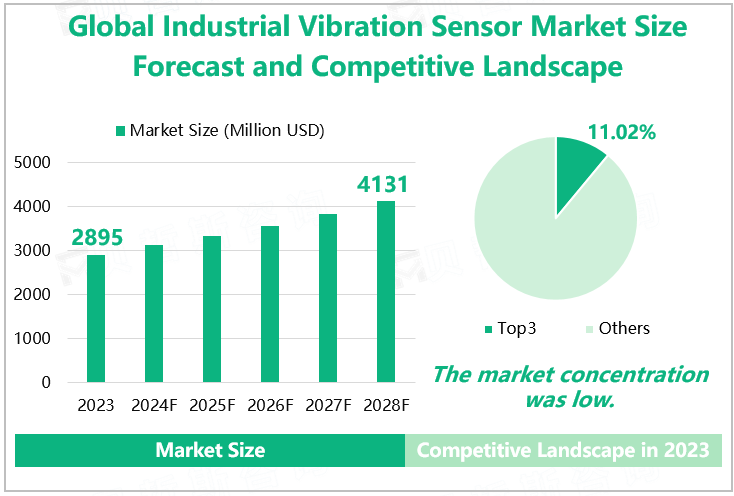Industrial vibration sensors, mainly for monitoring and detecting the vibration of mechanical equipment or structures, are widely used equipment in industrial environments. Its main function is to convert mechanical vibrations into electrical signals for subsequent processing and analysis. These sensors are usually composed of sensitive components, signal amplifiers, and filters, and are commonly used to monitor the vibration of industrial equipment, building structures, vehicles, and aircraft, and help diagnose problems and predict faults.
The working principle of vibration sensors is based on various physical effects, such as the Hall effect, resistance effect, capacitance effect, etc., depending on the design and application scenario of the sensor. For example, crystal piezoelectric materials or microelectromechanical systems (MEMS) in acceleration sensors generate charge or voltage signals with the vibration of objects, which are proportional to the acceleration of the vibration.
Overview of Market Development
In recent years, thanks to the continuous improvement of industrial automation and the rapid development of manufacturing, energy, transportation, and other fields, the global market size of industrial vibration sensors has continued to expand. According to our research data, the global industrial vibration sensor market size reached $2895 million in 2023, an increase of 7.20% compared to 2022.
In the coming years, it is expected that the market will continue to maintain a growth trend. On the one hand, with the continuous development of technology, industrial vibration sensor technology will also continue to progress and innovate, and new sensors will meet the more complex and demanding industrial environment requirements. On the other hand, the rapid development of emerging fields such as new energy and environmental protection will provide new growth drivers for the market. It is expected that by 2028, the global industrial vibration sensor market size will increase to $4131 million.
Analysis of Market Competitive Landscape
From the perspective of market competition, the concentration of the global industrial vibration sensor market is low. Data shows that in 2023, the industry's top 3 enterprises achieved a total revenue of $319 million in the industrial vibration sensor market, with a total revenue share of only 11.02%. The top three companies were Analog Devices, Inc., ABB Ltd, and TE Connectivity. In 2023, these three companies accounted for 4.35%, 3.36%, and 3.31% of the global market revenue in the industrial vibration sensor market, respectively.
Global Industrial Vibration Sensor Market Size Forecast and Competitive Landscape

Source: www.globalmarketmonitor.com
Segmented Market Analysis
From the perspective of product types, industrial vibration sensors can be divided into displacement sensors, velocity sensors, and accelerator sensors based on the different mechanical quantities measured. Among them, accelerator sensors occupy the largest market share. According to the data, in 2023, in the global industrial vibration sensor market, the sub-market size of acceleration sensors was $1371 million, with a market share of 47.36%.
From the perspective of downstream application patterns, the process industry is the largest downstream application market for industrial vibration sensors, with an application share of 73.26% in 2023.
Global Industrial Vibration Sensor Market Size and Share by Type and
Application in 2023
|
|
Market Size (Million USD)
|
Market Share
|
|
Segmented by Type
|
|
Displacement Sensor
|
261
|
9.02%
|
|
Velocity Sensor
|
415
|
14.34%
|
|
Accelerator Sensor
|
1371
|
47.36%
|
|
Others
|
848
|
29.29%
|
|
Segmented by Application
|
|
Process Industry
|
2121
|
73.26%
|
|
Discrete Industry
|
774
|
26.74%
|
Source: www.globalmarketmonitor.com
For more industry information, please refer to our latest released "2023 Global Industrial Vibration Sensor Market Analysis Report, Key Competitors, Market Effect Factors, Growth, And Forecast".
